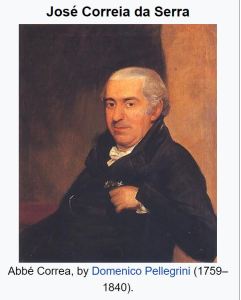Correa was named for the Portuguese botanist Correia da Serra. Of all the native flowers in my Blue Mountain gardens, it is one of the most visited by birds. Eastern Spinebills and New Holland Honey Eaters adore the nectar, and so do the bees. Pictured below is Correa pulchella.
The tubular flowers are perfectly designed for the long, curved beak of the Eastern Spinebill.
Its easy to see why these shrubs are often dubbed Native Fuchsia. Both have little pollen sacs extending from the bloom. They are brushed against by bees and the spinebills as they reach for the nectar.
Crimson rosellas eat the whole flower. Just outside my kitchen window is a tall, mountain correa, which they adore. The botanical name is Correa lawreceana x cordifolia. Mine is about 2 metres high and was planted as a seedling about ten years ago. It has thinned out a bit this year, which is a worry. I might have to buy a new one as an insurance policy.
And yes, tree correa is just as appealing to the king parrots. Hey, leave some the honey eaters please.
Correa alba is a smaller variety that responds well to clipping if you want a dense shrub. I have it growing behind a bird bath outside my bedroom window. It’s perfect for little thornbills and blue wrens to hide in.
The flowers of this variety have a different, more open shape. Instead of being tubular the petals are split into four. They look a bit like stars. A great feature is that they flower in autumn and winter. The tiny, cinnamon coloured buds are a bonus.
A rosella we call Blue Flash loves to breakfast on the blooms. That blob of pink bottom left is a different correa flower, carried in from somewhere else.
The variety below is C. Dusky Pink. What a beauty.
C. pulchella forms a dense mound only 30-40cm high. The flowers are a striking, orange colour.
This new variety is worth buying for the name alone; another low growing, winter flowering shrub for the understorey.
Here is a variety I don’t have, but wish I did. For good reason its common name is Chef’s Hat.
Here is another one I’ve just bought. This is a tall form of a variety called C. reflexa. It should reach a height of about two metres.
In December I use the flowers for a very special purpose; as ornaments for my Australian native, miniature Christmas tree. The little ‘tree’ pictured below is lycopodium, the most fascinating plant imaginable. It’s as ancient as the dinasaurs and found in very few places.
What a wonderfully hardy plant; drought and frost tolerant. It even survives snow here in Blackheath. It will flower well in partial shade, but does like a well drained soil. You can never have too many in my opinion, and the birds agree.
A few more go in.Here is another native favourite of mine; just as hardy and just as bird attracting. THE BANKSIA SERRATA
FEEL FREE TO LEAVE A COMMENT BELOW.



















Corneas are one of my all-time favorites too. Beautiful to look at and I love how they attract so many birds.
And winter flowering, which is great.
That was a lovely botanical tour of the different flowering Corneas. Some of them are just so unusual. I love your idea of one variety being used for a Christmas tree. I think that Blackheath must be a paradise for birds to be able to retain their eating of natural food. We don’t see as many bees anymore and some say that the use of pesticides or insecticides have taken a significant toll on their numbers.